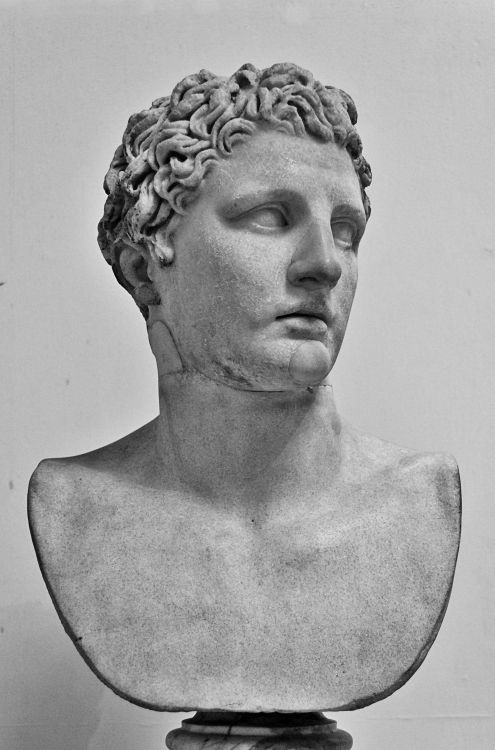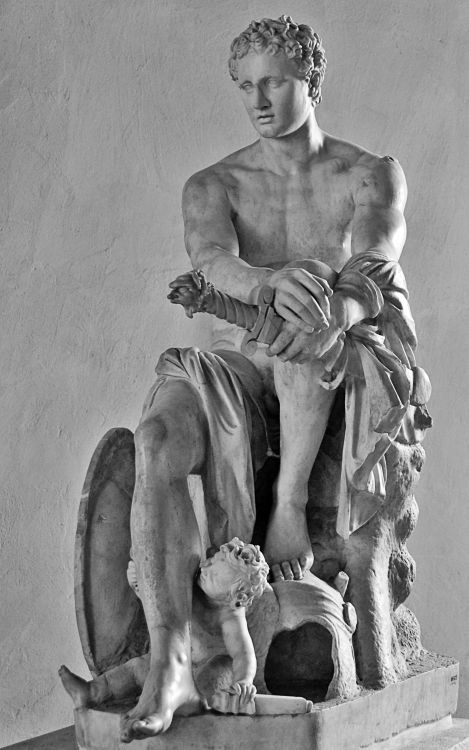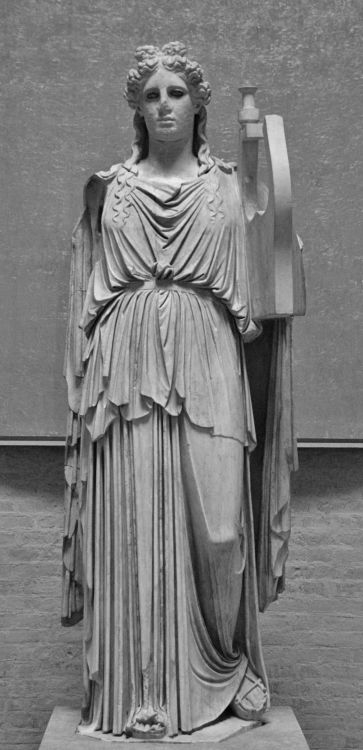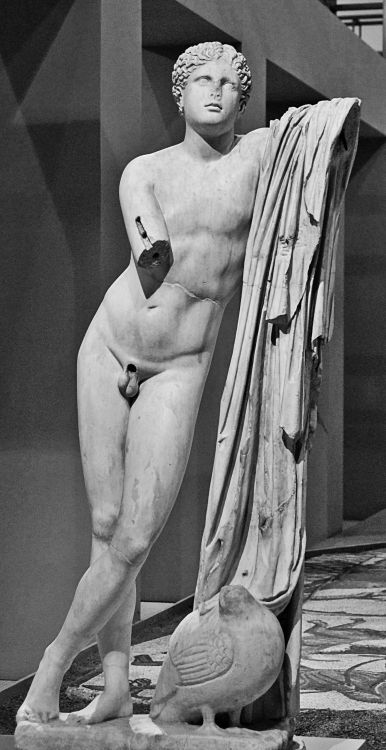mortisia:Scopas or Skopas (Ancient Greek: Σκόπας) (c. 395 BC – 350 BC) was an Ancient Greek sculptor
mortisia:Scopas or Skopas (Ancient Greek: Σκόπας) (c. 395 BC – 350 BC) was an Ancient Greek sculptor and architect most famous for his statue of Meleager, the copper statue of “Aphrodite” and the head of goddess Hygieia, daughter of Asclepius. Scopas was born on the island of Paros. His father was the sculptor Aristandros. Skopas left Paros at an early age and travelled throughout the Hellenic world. Scopas worked with Praxiteles, and he sculpted parts of the Mausoleum of Halicarnassus, especially the reliefs. He led the building of the new temple of Athena Alea at Tegea. Similar to Lysippus, Scopas is artistically a successor of the Classical Greek sculptor Polykleitos. The faces of the heads are almost in quadrat. The deeply sunken eyes and a slightly opened mouth are recognizable characteristics in the figures of Scopas.Works by Scopas are preserved in the British Museum (reliefs) in London; fragments from the temple of Athena Alea at Tegea in the National Archaeological Museum of Athens; the celebrated Ludovisi Ares in the Palazzo Altemps, Rome; a statue of Pothos restored as Apollo Citharoedus in the Capitoline Museum, Rome; and his statue of Meleager, unmentioned in ancient literature but surviving in numerous replicas, perhaps best represented by a torso in the Fogg Art Museum, Cambridge, Massachusetts. Pictures 1) Roman marble head of Meleager, after Scopas, on a restored bust (British Museum), 2) Ludovisi Ares. Pentelic marble, Roman copy after a Greek original from ca. 320 BC. Some restorations in Cararra marble by Gianlorenzo Bernini, 1622, 3) Apollo Barberini. The musician god holds in his left arm the “kithara” and in his right one a cup (the right arm and the left front arm were worked separatly). Eyeballs in white stone and lashes in bronze (iris and pupils, lost, were made in colored materials). Probable copy of the cult statue in the temple of Apollo Palatinus in Rome (free reproduction of a work from 4th century BC). 1st–2nd century CE, 4) Pothos, or Desire, was a celebrated and much imitated statue by Scopas. Roman copies featured the human figure with a variety of props, such as musical instruments and fabrics as depicted here, in an example that was in the collection of Cardinal Alessandro Albani. -- source link
Tumblr Blog : mortisia.tumblr.com
#scopas#ancient#art#greek#sculptor#statue#biography



